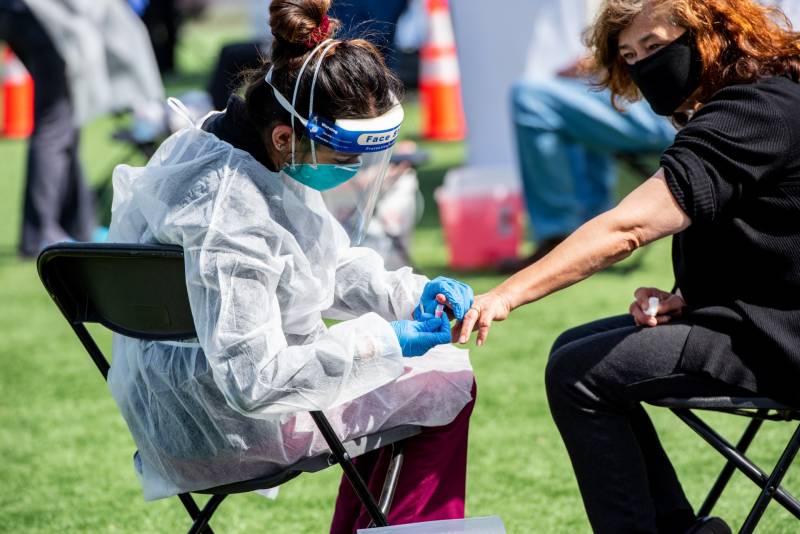Dr. Matt Willis, Marin County Public Health Officer:
Willis says the county has had to overcome several testing supply chain barriers since the start of the pandemic.
“One week it was swabs. The next week would be vials. The next week it might be the reagents,” Willis said. “Every week, we’ve had to solve for one issue or another.”
He says maintaining enough swabs was the biggest challenge, but that has recently changed.
“The supply issues have gotten a lot better just in the last couple weeks,” Willis said. “We did have a period where we had more capacity to test than we had patients to test.
“Now that we actually have sufficient supplies, we are fixing the next issue, which is just acquiring the staffing and building the operations to scale up. And that’s the work of the next couple of weeks.”
Dr. Erica Pan, Alameda County Interim Health Officer:
Pan says Alameda County has also seen improvement on the testing supply front.
“A lot of the resources, things like swabs, are getting to where they need to expand testing within the health care system,” she said. “Then we’re also setting up new test sites. So this is continuing to increase rapidly every week.”
Supply chain shortages have limited the number of people who could receive COVID-19 tests, but Pan says having more tests means the criteria for who qualifies for a test can be more inclusive.
“Because there weren’t enough testing supplies, people were trying to prioritize [those] at the highest risk for severe disease or highest risk of spreading disease or highest risk of exposure to disease,” she said. “So now that there’s more testing resources, we can offer testing to people who have clinical symptoms that we’re concerned about.”
Pan says Alameda County is also focused on expanding testing to reach underserved communities
“We certainly want to make sure we’re targeting locations where there hasn’t been much testing,” she said. “Communities where we are concerned there’s higher disease because of health inequities or socioeconomic inequities. We know we’re seeing more Latino cases in our case count. So we want to make sure we’re able to test communities of color.”
This week, the county announced four new testing sites to help bridge the gap.
Dr. Chris Farnitano, Contra Costa County Health Officer:
Farnitano said shortages of many of the elements required for expanded testing have been cleared up.
“Essentially every one of those has gotten much, much better. We have really sufficient PPE, swabs, reagents and machines to run as many tests as we’re able to.”
Farnitano says supplies recently increased to the point where some testing sites were seeing a surplus of unused tests.
“Right now, both the county and the private partners have test sites that could handle more business than they’re getting,” Farnitano said. “So that’s part of our reason we felt we could open up the testing to anyone who wants testing.”
Farnitano says the county health department has seen a spike in the demand for COVID-19 tests since the announcement was made last week.
“Our phones are struggling to keep up with all the calls,” he said. “But we’re adding more people to the phones, and once they get through, they are able to schedule appointments the same day or the next day if they want to get a test.”
